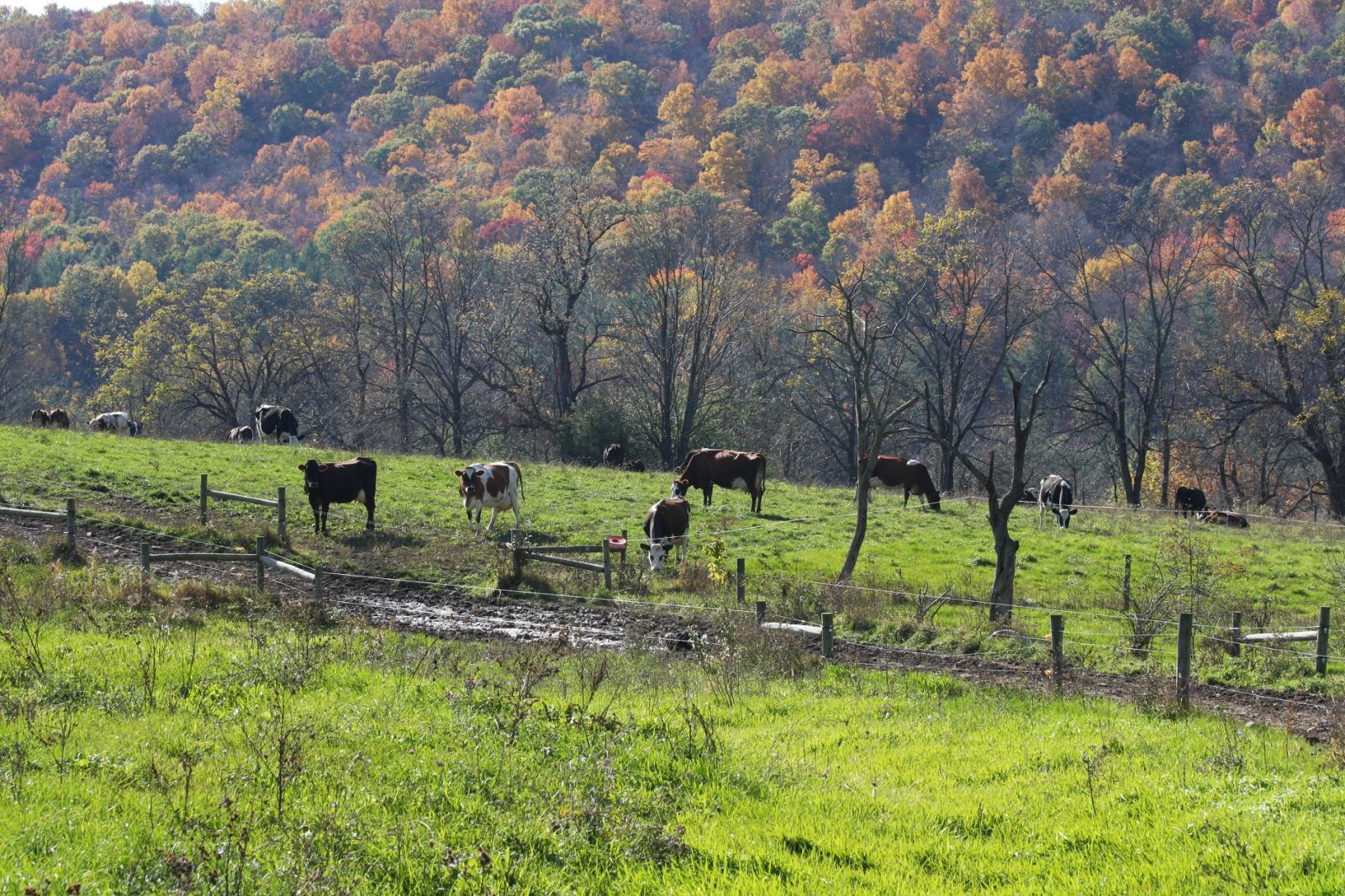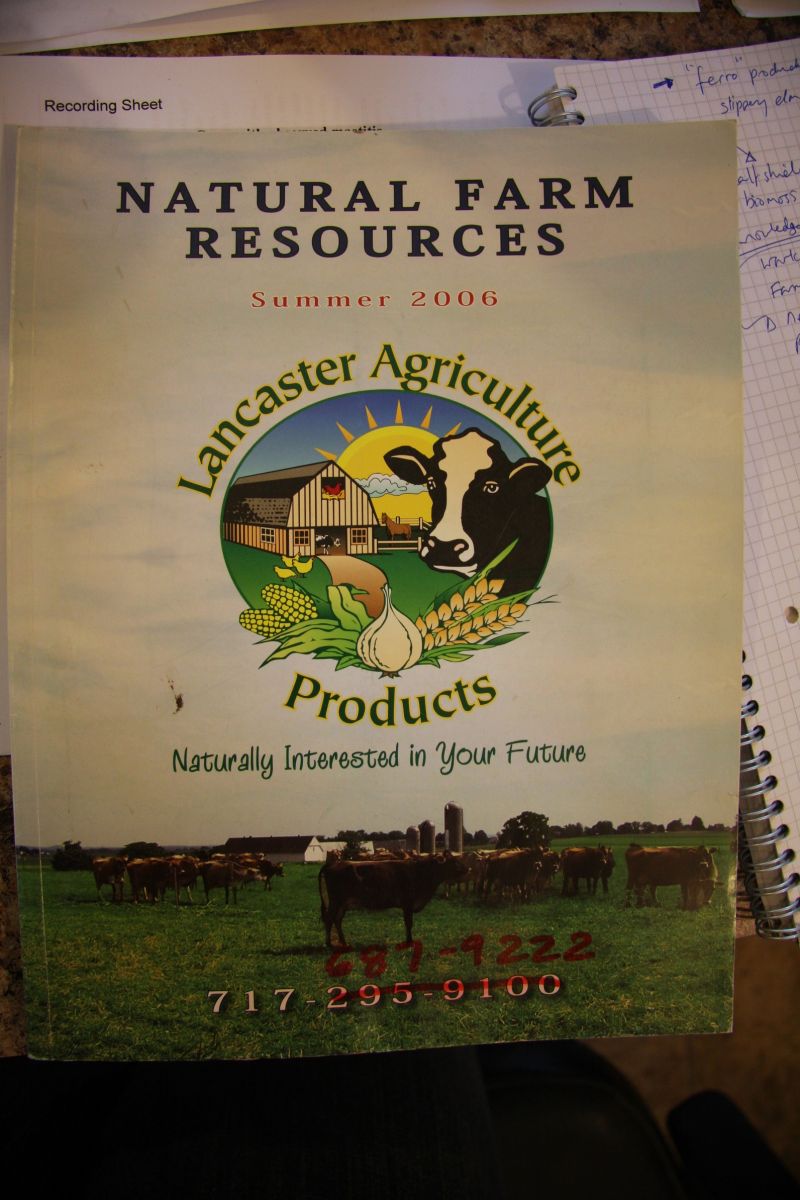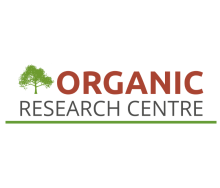Antibiotics: can we keep farm animals well without them?
In 2010, I took a trip to Wisconsin, Pennsylvania and New York, USA, to ask some organic dairy farmers about how they managed health and disease in their cows. In contrast to Europe, American organic farmers are not allowed to treat an animal with antibiotics without that animal permanently losing its organic status. That said, US farmers must still use antibiotics where no other treatments exist.
Much of what the farmers said to me was familiar but, as you will see in the comments below, they all emphasised that doing the ‘basics’ well was vital for keeping animals healthy. “Some diseases you have to treat,” said one farmer, “but many can be avoided.” This required a whole system thinking approach which, for the farmers, included:
Managing soil health: “Preventing disease all starts with the soil and micronutrients ending up in the feed. Alternative treatments rely on a healthy immune system to work so cows have to be in good condition to respond well.”
Feeding a high forage/low grain diet with adequate supplements: “Getting the digestive system sorted sorts out many other problems.” Some of the farmers preferred to restrict access to supplements whilst others believed that the cows were aware of their own health status and could self-regulate intake. This certainly seemed to be the case where bicarbonate of soda was offered as a pH buffer for the gut and intake was noticeably higher during the autumn as cows ate increasingly less grass and more ensiled feed. All herds were offered kelp and mineral salt as a minimum. Several farmers offered kelp to young stock to help manage New Forest disease.

Bicarbonate of soda and kelp offered ad lib
A reduced emphasis on yield: “50% of yield and 90% of herd problems have gone with conversion. We were not aware how hard the cows were working in the conventional system. The cows were being driven into the ground.” Although this farmer had been organic for 10 years at this point, the health outcomes of reducing milk yield in his formerly intensive, high-yielding herd was the single most important lesson he felt he’d learnt in terms of cow care.
Daily exercise with access to pasture, good trackways and good stockmanship were all considered important for good rumen function, good leg health and low stress respectively. Here, “kindness”, being “gentle and patient” and “consistency” were key words for these farmers.
Unsurprisingly, clean, comfortable cows and good hygiene during the milking routine were considered vital for minimising the spread of any disease present in the herd and several farmers practised milking ‘problem cows’ last, with some even allocating specific housing areas, particularly where Staphylococcus aureus was a problem.
Housing
Of course, there is no one perfect housing and management system, and several farmers cited their existing housing system as a problem, typically mentioning poor lying comfort and flooring type as issues. Only 2 herds were winter housed in straw yards, and 2 herds in New York state were kept outdoors all year round except in the most severe weather. “Cows are meant to be outside on grass and barns were built for humans.” Both farms had a straw yard available but the cows typically chose to go out, even with fields covered in snow. That said, these systems affected treatment choices for sick animals and more time-consuming approaches were less likely to be used when a specific cow had to be isolated or caught for treatment outside of milking.

Cows at grass in late October, New York State
Farmer observations and treatment strategies
Most of these farmers emphasised that when treating illness, a good knowledge of disease indicators and a quick reaction to initial signs was paramount. “Promptness in treating is essential. You have to be observant since speed of treatment will determine both duration and outcome.” They also noted that the duration of treatment is typically longer than with conventional therapy. “The timeline is longer with organic treatments, it takes longer to work but the outcome is the same.”
Unsurprisingly, all farms had treatment strategies for udder disease, reproduction problems, and lameness, along with a few experiencing metabolic and respiratory problems.
Treatment for mastitis included udder mint, and homeopathic preparations. However, treatments did not always act directly upon the disease but were also given to help boost the animal’s immune system. These immune-boosting therapies are commercially available in the US and they typically include whey-based immune stimulants, plant extracts, vitamins and minerals. Farmers used these along with pain killers, specifically aspirin, for obviously painful issues including difficult calving, lameness and mastitis. On one farm, where grassland was plentiful, lactating sick cows not responding to early treatment were promptly dried off and put into a hospital paddock until they were fully recovered.
Scours, pneumonia, pink eye, ringworm and internal parasites were treated in young stock. Crushed black walnut shells were also added to milk to help stop scouring. Several farmers gave their calves 10 litres of milk daily and their health and growth rate was strikingly good. These farmers had learned to distinguish between scours from disease and from ‘too much’ milk and recognised that calves quickly learned to manage intake problems by themselves as long as milk was offered at the correct temperature. When I asked why they fed them so much milk, the farmers said it was so their calves could stay healthy and they enjoyed looking after them much more this way.

Alternative therapies geared toward the treatment of animals are readily available in the US, and on-line catalogues such as the ‘Lancaster Agricultural Products’ offer a wide range of available supplements and therapies including homeopathic remedies, tinctures and herbs. Some farmers relied on their vets to help but others preferred to treat cows independently, using ‘off the shelf’ preparations or creating their own treatment plans. The longer the farm had been organic, the more likely farmers were to have detailed treatment plans that were specific to each disease. Notably, farmers kept pretty good records of treatments and outcomes which they used to improve their cow care.
The consensus?
So, is it possible to keep farm animals well without antibiotics? Well, of the 18 farmers visited, 8 had treated an animal with antibiotics after conversion to organic farming, though only 2 farmers said that they missed using antibiotics; one in relation to treating coccidiosis in calves, the other in treating cow lameness. None of the farmers thought that keeping animals in good health was easy, but there was a general belief that farming according to organic principles and standards was beneficial. “… try to farm closer to the old-fashioned way where there is more harmony between everything.”
Lindsay writes:
Farming and farm animals have been an interest of mine for so long that I can’t remember when it began. I started milking dairy cows at 17 and continued for several years, both in the UK and in Denmark. I carried on with relief milking and lambing when I returned to education as an adult student. I now work as a Livestock Researcher for the Organic Research Centre, where the sustainability of farming systems is in focus. A quick look in the thesaurus shows that the verb ‘to sustain’ encompasses many aspects that are fundamental to the care of people, animals and the Earth, including to maintain, support, comfort, nurture and give strength to… It is in this kind of world that I wish to live. ‘Why animals do what they do?’ is of great interest to me and observing them can play a big part in our understanding. As the poet William Henry Davies stated, “What is this life if, full of care, We have no time to stand and stare’.
Learn more:
Agricology features many sources of information to help increase our understanding and treatment of livestock, applying many of the principles that Lindsay describes. Have a look at:
- Information on an Innovative Farmers field lab ‘Improving the targeting of mastitis treatments’
- The knowledge hub ‘FarmHealthOnline.com’
- The British Veterinary Association podcast ‘Cattle lameness and digital dermatitis‘
- Sally Wood’s blog ‘Homeopathy; a credible alternative to antibiotics’
- The Woodland Trust case study ‘Trees provide fodder and boost production’
- A series of technical notes on low-input/organic dairying systems ‘Sustainable Organic and Low Input Dairying (SOLID)‘
- Three of our farmer profiles; Christine Page, David Finlay, and Christine Gosling
(Editor’s Note)

